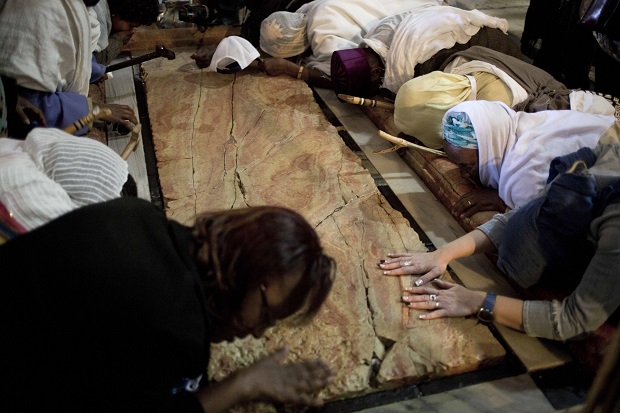
Worshipers pray by the Stone of Unction, where according to Christianity Jesus was laid after he was crucified on the first Good Friday in 33 AD. The resting place of Jesus before His resurrection is now inside the Church of the Holy Sepulcher, which is set to undergo restoration. AP
JERUSALEM — A major restoration project has begun at the shrine inside Jerusalem’s Church of the Holy Sepulcher where Jesus is said to have been buried before his resurrection.
An AFP photographer visiting the church on Sunday saw scaffolding going up and workers welding steel supports.
Church officials had said in March that work was to be carried out by a team of Greek specialists.
They said the project was expected to be completed in early 2017 and that the site would remain open to visitors in the meantime.
Workers in the church erected a steel canopy over the entrance to the tomb structure, to protect visitors from possible debris.
The shrine, several meters tall and wide and standing under the church’s dome, has for decades been held together by a metal frame.
Its marble slabs have weakened over the years, caused in part by daily visits from thousands of pilgrims and tourists.
The shrine was built in the early 19th century over the site of the cave where Jesus is believed to have been buried.
It will be painstakingly dismantled and rebuilt during eight months of restoration work, said the Custody of the Holy Land, which oversees Roman Catholic properties in the area.
Broken or fragile parts will be replaced while marble slabs that can be preserved will be cleaned, and the structure supporting them will be reinforced.
The work is being funded by the three main Christian denominations of the Holy Sepulcher — Greek Orthodox, Franciscans and Armenians — as well as from public and private contributions.